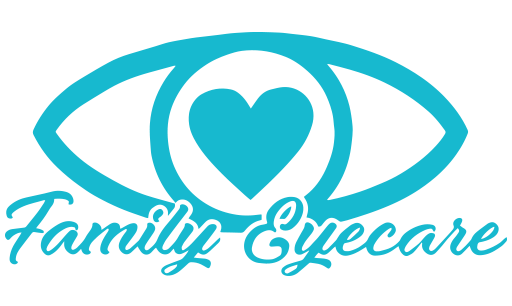As the new school year approaches, it’s time to prepare your student for a productive academic year filled with achievements, learning, success, and fun.
Did you know that up to 80% of learning is achieved through your student’s visual system? One of the most important ways to ensure that your student starts and finishes the year successfully is to schedule a comprehensive eye exam with your optometrist before the school year begins.
So — why is it so important to see your optometrist before school starts? Easy answer. School time = excessive screen time = eye fatigue.
Our technology-driven world can lead to extreme eye fatigue or eye strain and the annoying symptoms that accompany prolonged use of so many digital devices. Two out of three students experience one or more symptoms of eye strain — it’s a very common complaint.
As a parent, you can help by staying alert for eye fatigue symptoms that your student may exhibit — especially at the end of a long school day. Be aware of your student’s study habits in order to help guide them to better vision care as they spend more time than ever before in front of digital screens.
Symptoms of Eye Fatigue
Ask your student if they are experiencing any of these eye fatigue symptoms:
- Burning, itching, or tired eyes
- Blurred or double vision
- Headache
- Increased sensitivity to light or difficulty keeping their eyes open
- Watery or dry eyes
The good news about eye fatigue? We have an innovative technology that helps combat eye discomfort and fatigue AND enhances visual clarity: Anti-fatigue lenses!
What are Anti-Fatigue Lenses?
Anti-fatigue lenses are designed to relax and protect the eyes while allowing optimal vision correction. How is that possible? Because of designated lens zones that support near vision and reduce the amount of effort it takes the eye to focus.
Anti-fatigue lenses are single-vision lenses that offer a slight “boost” at the top of the visual field for optimal distance vision plus a slight magnification at the bottom of the lens to ease strain on the ciliary muscle of the eye, which you use when focusing on close-up tasks such as reading, texting, and computer work. The gentle boost lessens eye strain caused by frequent shifts in focus from near to far.
This subtle lens progression seamlessly transitions to help ease eye muscles and also acts as a preventative measure against future refractive issues stemming from weakened eye muscles due to digital eye strain.
Anti-fatigue lenses are distinctly different from progressives or single-vision lenses because they aren’t segmented like bifocals, nor are they gradually progressive like multi-focals, which correct a variety of distances and close-up ranges. Anti-fatigue lenses minimize accommodative stress and solve the problem of eye fatigue by reducing visual effort.
Your eye doctor can provide a prescription for anti-fatigue lenses that ease demand on your eye muscles during sustained screen use because they utilize your unique prescription in conjunction with a slight “bump” in your correction.
Benefits of Anti-Fatigue Lenses
- Reduce and prevent the symptoms of visual fatigue and improves visual comfort. Anti-fatigue lenses are designed for single-vision wearers (a single correction focused evenly over the entire surface area of the lenses) who suffer from high visual fatigue and eye strain. The lenses work to support your eye’s efforts to focus and improve the wearer’s ability to read small text.
- Smooth visual transitions. Anti-fatigue lenses provide only a minor shift in power, which means little or no distortion. This allows the wearer to adapt to the lenses quickly.
- Enhances learning. These lenses can positively impact performance, energy levels, and overall visual comfort to make long hours of studying a breeze.
- Improves contrast. Specific color absorbers in the lenses maintain visual clarity, while the anti-glare coating minimizes reflections and glare for the best and most comfortable vision in any light.
- Advanced blue-violet light filtering. Molecules in the lenses reduce blue light exposure and selectively absorb blue light from phones, tablets, computers, televisions, and digital screens.
Additionally, the lenses offer 100% UV protection to protect your eyes from natural sunlight without compromising contrast or color perception.
Who can Benefit from Anti-Fatigue Lenses?
Students as young as 8 years old can benefit from anti-fatigue lenses, and the benefits extend to patients of all ages who need single-vision correction. Patients who do not require significant corrective lenses are the best candidates — typically school-aged children and young adults.
Bottom Line
Keep an “eye” on your student’s screen time to actively help them manage device time. Their eyes are exposed to blue screen light, artificial light, and sunlight all day long, throughout the year. Managing exposure is the key to keeping your student’s vision the best it can be every day.
Give our office a call today to schedule your student’s exam. While you’re here, we can explain the benefits of anti-fatigue lenses in-depth. Your student will start the school year off with a head start on overcoming eye fatigue!

